Chickpea Flour Crepes
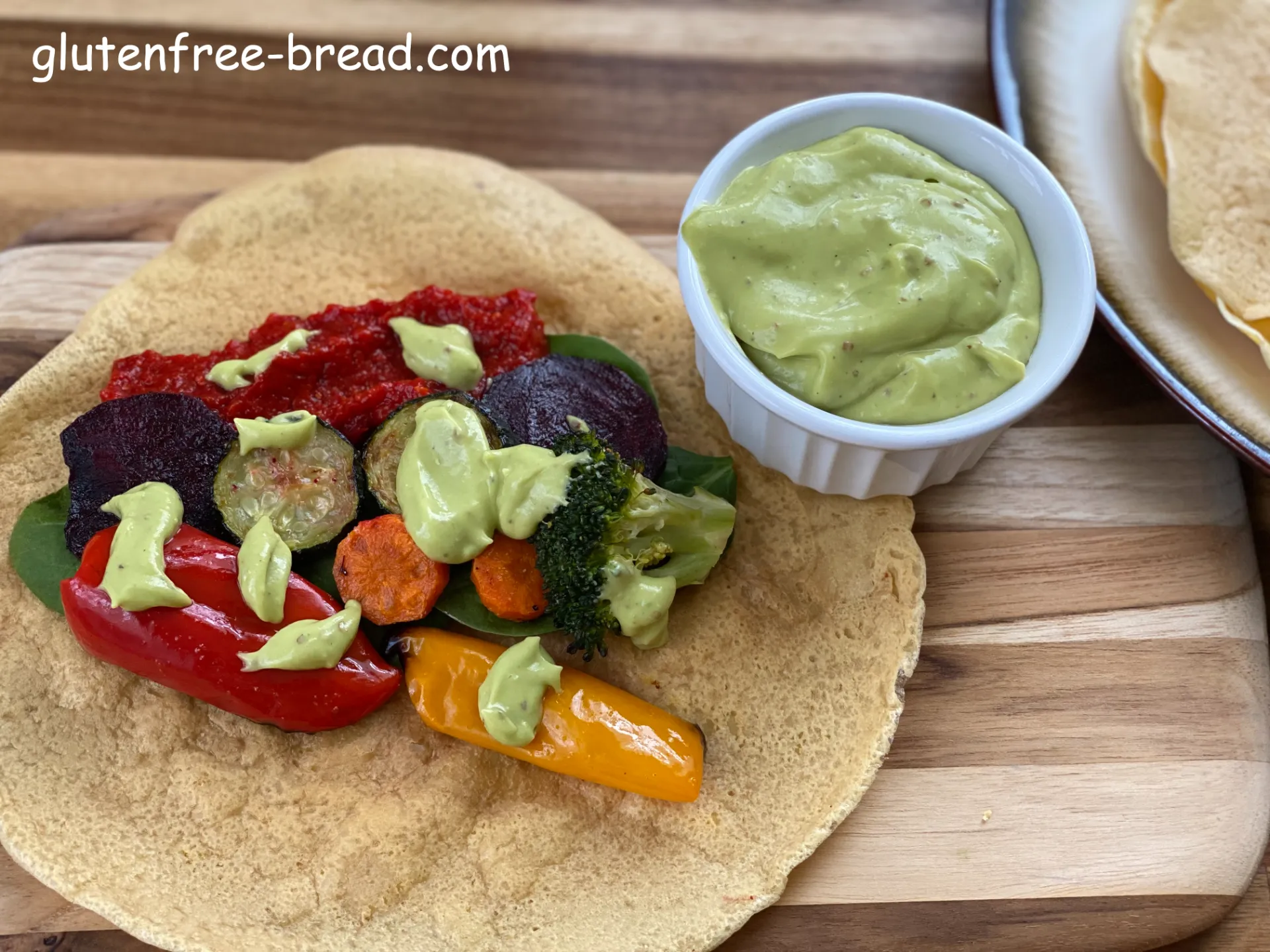
Ingredients:
| Name | Metric | US | |
|---|---|---|---|
| Chickpea Flour | 130 gr | 1 cup | |
| Water, room-temperature | 300 ml | 1 1/4 cups | |
| Salt | 3 gr | 1/2 teaspoon | |
| Nutritional Yeast, optional | 10 gr | 1 tablespoon |
Optional Ingredients for sweet version:
| 3 ml / ½ teaspoon Vanilla | |
| 15 gr / 1 tbsp Sweetener ( Maple Syrup, Honey or Coconut Sugar) |
Equipment:
| Blender or hand mixer | |
| Crepe pan or non-stick skillet |
Steps:
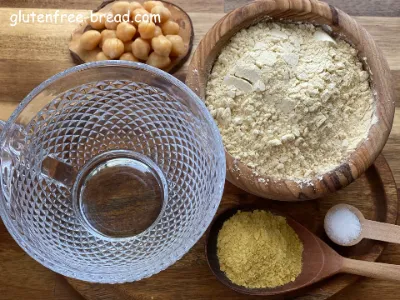
Step 1
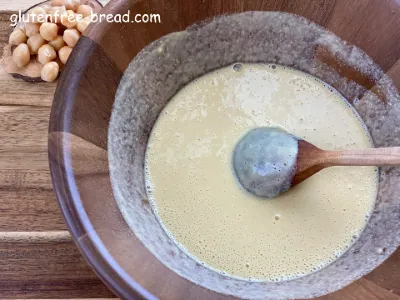
Step 2
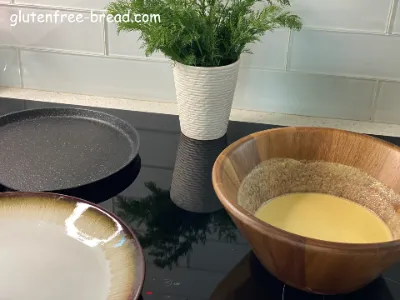
Step 3
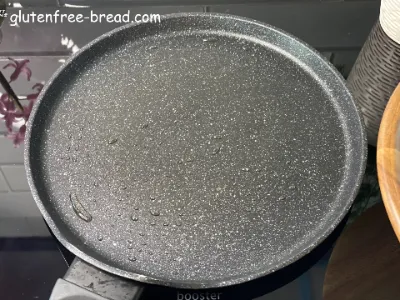
Step 4
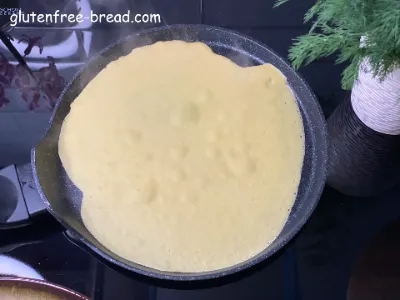
Step 5
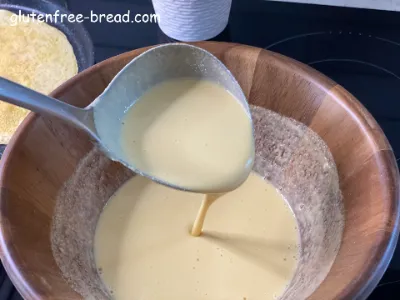
Step 6
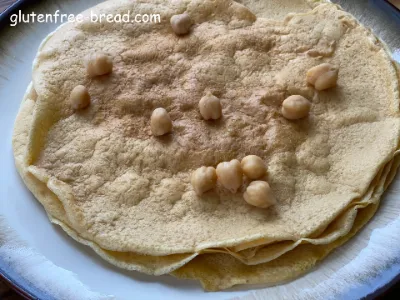
Step 7
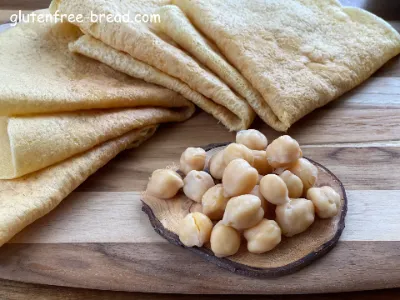
Step 8
Notes:
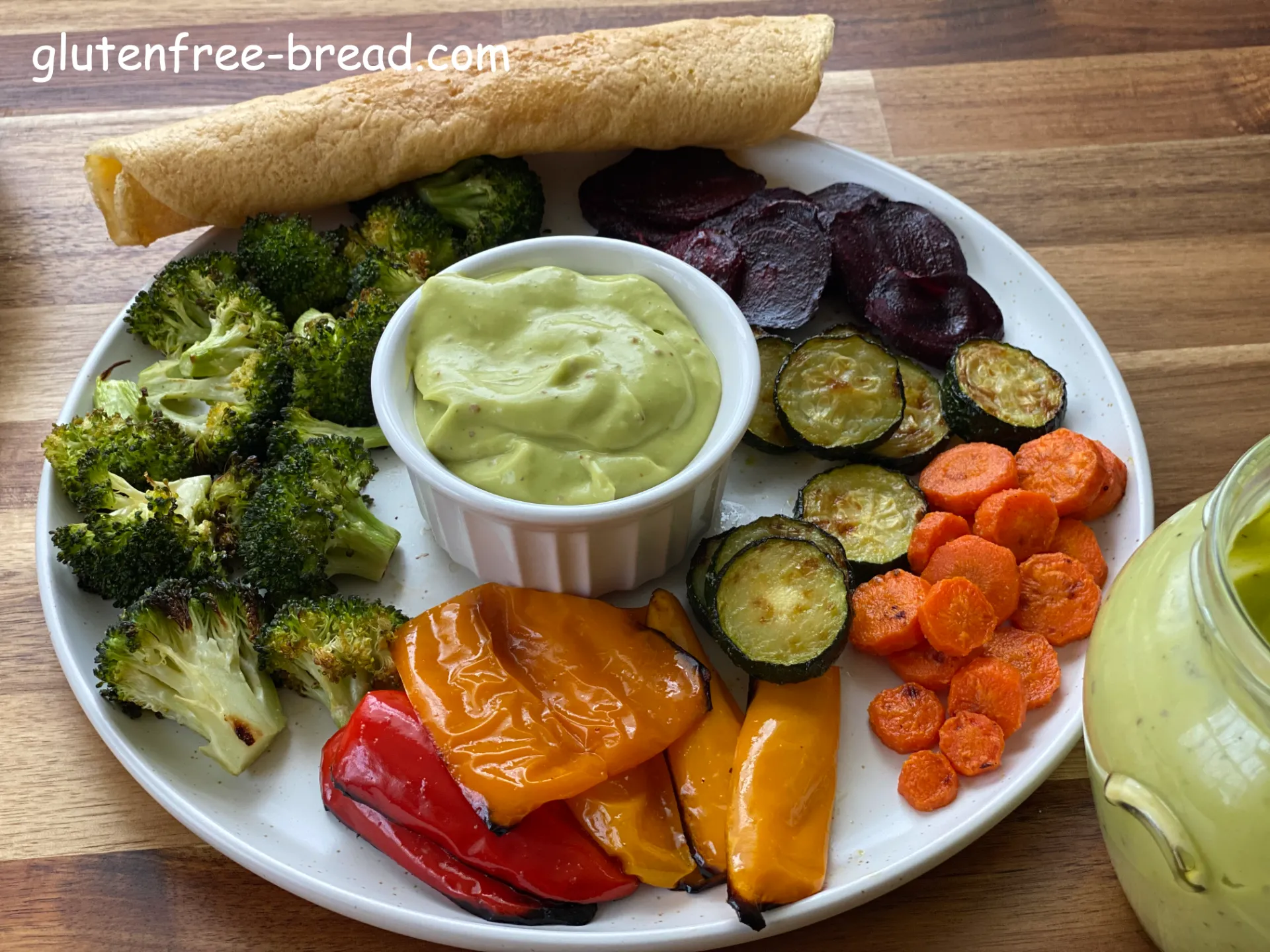
Chickpea Flour Crepes
Here are some tips for making perfect crepes:
Use the right batter consistency: The crepe batter should be thin, similar to the consistency of heavy cream. If it's too thick, the crepes will be too dense; if it's too thin, they may tear easily.
Let the batter rest: Allow the batter to rest for at least 10 minutes before cooking. This allows the flour/grains to fully hydrate and results in smoother crepes.
Preheat the pan: Preheat a non-stick skillet or crepe pan over medium heat before adding the batter. The pan should be hot enough that a drop of water sizzles and evaporates immediately.
Use the right amount of batter: Pour just enough batter into the pan to thinly coat the bottom when swirled. You can use a ladle or measuring cup to portion out the batter.
Swirl the batter: Once you pour the batter into the pan, quickly tilt and rotate the pan to spread the batter evenly in a thin layer. This helps create a uniform thickness for the crepe.
Cook on one side first: Cook the crepe on one side until the edges start to brown slightly and the surface appears dry, about 1-2 minutes.
Flip carefully: Use a thin spatula to gently lift and flip the crepe. If you're new to making crepes, you can use your fingers to help guide the crepe as you flip it.
Cook briefly on the other side: Cook the crepe on the other side for another 15 seconds or until lightly browned.
Addind baking soda:Adding baking soda to crepe batter is often optional. If a recipe calls for soda but you prefer not to use it or don't have any on hand, you can often omit it without affecting the outcome of the crepes. The crepes may be slightly denser and may not brown as evenly, but they still will be tasty and perfectly edible.
Keep warm: If you're making a large batch of crepes, you can keep them warm by covering the stack with a clean kitchen towel while you finish cooking the rest.
Experiment with fillings: Get creative with your crepe fillings! Sweet options like Nutella, fresh fruit, whipped cream, or jam are classic choices, while savory options like cheese, ham, spinach, or mushrooms can also be delicious.
With practice and patience, you'll be able to master the art of making perfect crepes every time!
Chickpea Flour Crepes additional information:
Chickpea flour, also known as gram flour or besan, possesses several beneficial properties due to its nutritional composition and culinary versatility:
Protein-Rich: Chickpea flour is notably high in protein, which is essential for muscle repair and growth, as well as for maintaining overall health. It is particularly valued as a plant-based source of protein.
Rich in Dietary Fiber: It is a good source of dietary fiber, which supports digestive health, helps regulate blood sugar levels, and contributes to a feeling of fullness and satiety after meals.
Gluten-Free: Being naturally gluten-free, chickpea flour is suitable for individuals who need to avoid gluten due to celiac disease or gluten sensitivity. It serves as an excellent alternative to wheat flour in gluten-free cooking and baking.
Nutrient-Dense: Chickpea flour contains various vitamins and minerals, including iron, magnesium, phosphorus, zinc, and B vitamins (especially folate). These nutrients play crucial roles in energy metabolism, immune function, and overall well-being.
Low Glycemic Index: Foods made with chickpea flour typically have a lower glycemic index compared to those made with refined wheat flour. This means they cause a slower and more gradual rise in blood sugar levels after consumption, which is beneficial for managing blood sugar levels.
Antioxidant Properties: Chickpea flour contains antioxidants such as flavonoids and phenolic compounds, which help protect cells from damage caused by free radicals and oxidative stress.
Versatility in Cooking: It is highly versatile and can be used in a wide range of recipes, both sweet and savory. Chickpea flour is commonly used to make pancakes, crepes, fritters, flatbreads, cookies, cakes, and even as a thickening agent in soups and sauces.
Cultural and Culinary Significance: Chickpea flour has a long history of use in various cuisines around the world, including Indian, Middle Eastern, and Mediterranean cuisines. It adds a distinctive flavor and texture to dishes, contributing to their overall appeal.
Overall, chickpea flour's nutritional profile and culinary properties make it a valuable ingredient for those seeking to enhance the nutritional content of their diet, manage dietary restrictions, or simply enjoy diverse and flavorful meals.
Here are some recommendations for incorporating chickpea flour into your diet:
Substitute for Wheat Flour: Use chickpea flour as a gluten-free alternative to wheat flour in baking recipes such as pancakes, crepes, muffins, and bread. Start by replacing a portion of the wheat flour with chickpea flour to adjust to its nutty flavor and denser texture.
Make Savory Dishes: Use chickpea flour to make savory dishes such as socca (a type of pancake), fritters, flatbreads (like Indian roti), and coatings for frying vegetables or proteins. Its high protein content and ability to bind ingredients make it ideal for these applications.
Thicken Soups and Sauces: Chickpea flour can be used as a thickening agent in soups, stews, and sauces. Mix it with water or broth before adding it to hot liquids to prevent clumping and ensure a smooth consistency.
Boost Protein Content: Add chickpea flour to smoothies, protein shakes, or homemade energy bars to boost their protein content. It provides a plant-based protein source that can support muscle repair and growth.
Create Gluten-Free Snacks: Use chickpea flour to make gluten-free snacks such as crackers, chips, and savory biscuits. Combine it with herbs, spices, and a small amount of oil to create flavorful and crunchy treats.
Experiment with Ethnic Recipes: Explore recipes from cuisines that traditionally use chickpea flour, such as Indian (for example, besan chilla or pakoras), Middle Eastern (for example, falafel or hummus), and Mediterranean (for example, socca or farinata). This allows you to experience different flavors and textures while benefiting from the nutritional properties of chickpea flour.
Combine with Other Flours: Mix chickpea flour with other gluten-free flours like almond flour, tapioca flour, or rice flour to create blends that improve texture and flavor in baked goods.
Store Properly: Store chickpea flour in an airtight container in a cool, dry place to maintain its freshness and prevent it from absorbing moisture.
By incorporating chickpea flour into your diet in these ways, you can enjoy its nutritional benefits while adding variety and flavor to your meals. Adjust the amount used based on your personal taste preferences and dietary needs.
Chickpea flour can be effectively used as an egg substitute in various recipes, especially in vegan cooking or for those with egg allergies or dietary preferences. Here's how you can use chickpea flour as an egg substitute:
Chickpea Flour Egg Substitute Recipe:
Ingredients:
- 1 tablespoon chickpea flour
- 2-3 tablespoons water
Instructions:
Mix: In a small bowl, whisk together 1 tablespoon of chickpea flour with 2-3 tablespoons of water. The exact amount of water may vary depending on the consistency needed for your recipe.
Whisk: Whisk the mixture well until smooth and there are no lumps. The consistency should be similar to a thin pancake batter.
Use: Replace one egg in your recipe with this chickpea flour mixture. Use it in baking recipes, pancakes, crepes, or wherever eggs are typically used as a binder or leavening agent.
Tips for Using Chickpea Flour as an Egg Substitute:
Adjust Consistency: Depending on the recipe, you may need to adjust the amount of water slightly to achieve the right consistency. The mixture should be thick enough to bind ingredients together but not too thick that it clumps.
Binding Agent: Chickpea flour acts as a binding agent, similar to eggs, helping to hold ingredients together in recipes such as veggie burgers, meatballs, or baked goods.
Leavening: In baking, chickpea flour can help provide structure and lift to baked goods, although it may not provide as much leavening as eggs. Consider combining it with a leavening agent like baking powder for optimal results.
Flavor Consideration: Chickpea flour has a slightly nutty flavor that may affect the taste of your final dish, especially in recipes where eggs contribute to the flavor profile. Adjust seasonings or use complementary ingredients to balance the flavors.
Experiment: It's a good idea to experiment with chickpea flour in small batches initially to determine how it performs in your favorite recipes. Over time, you'll get a feel for how to adjust the amount based on the specific requirements of each dish.
By using chickpea flour as an egg substitute, you can enjoy the benefits of a plant-based alternative that is rich in protein and fiber while accommodating various dietary needs and preferences.







